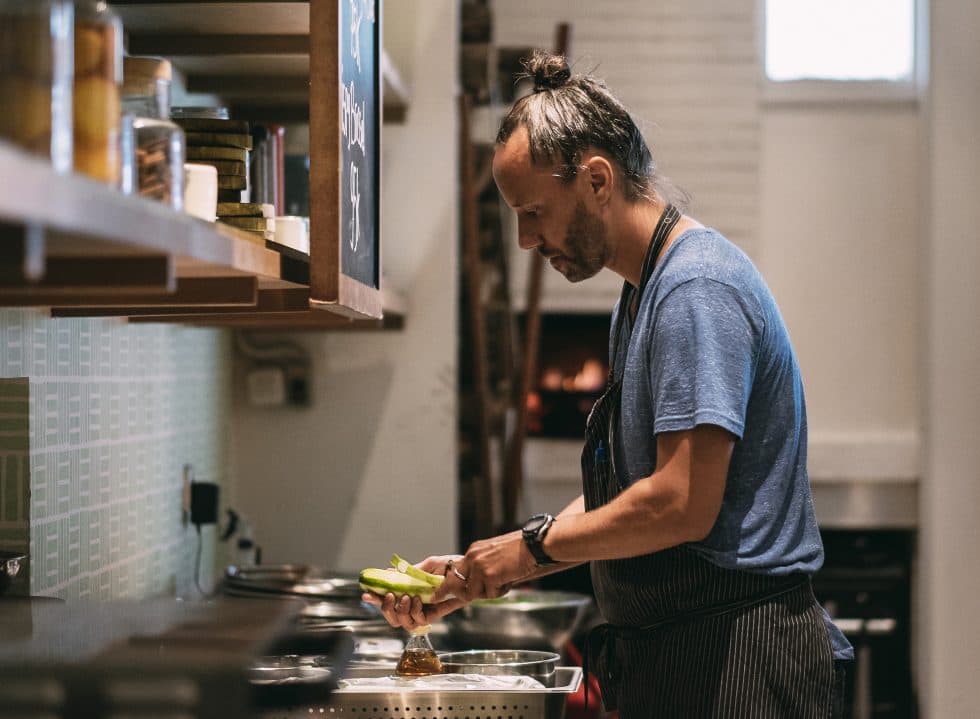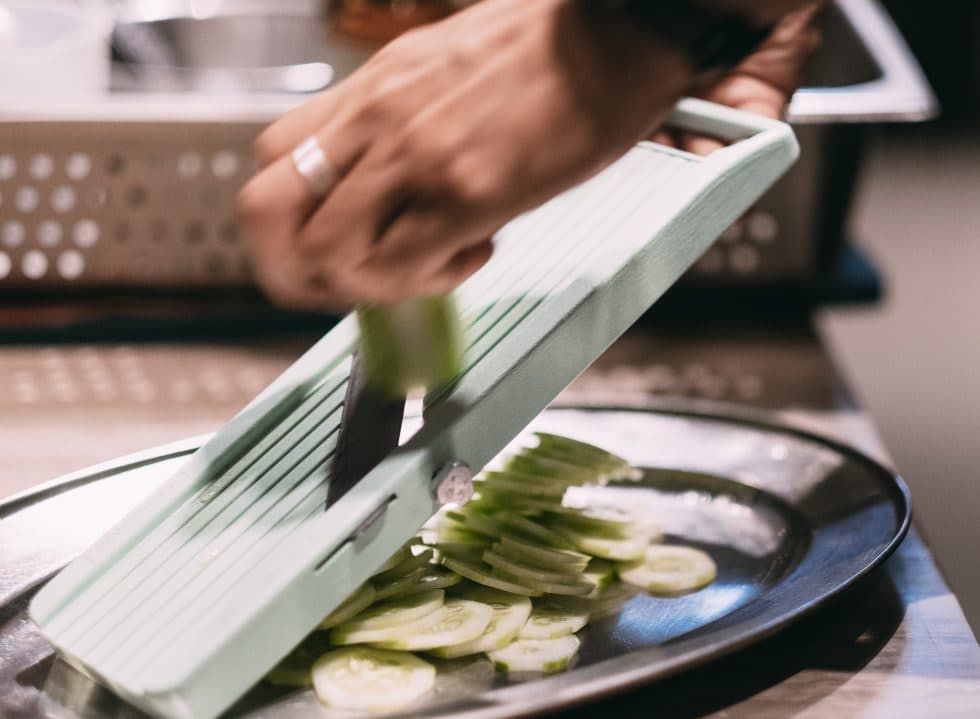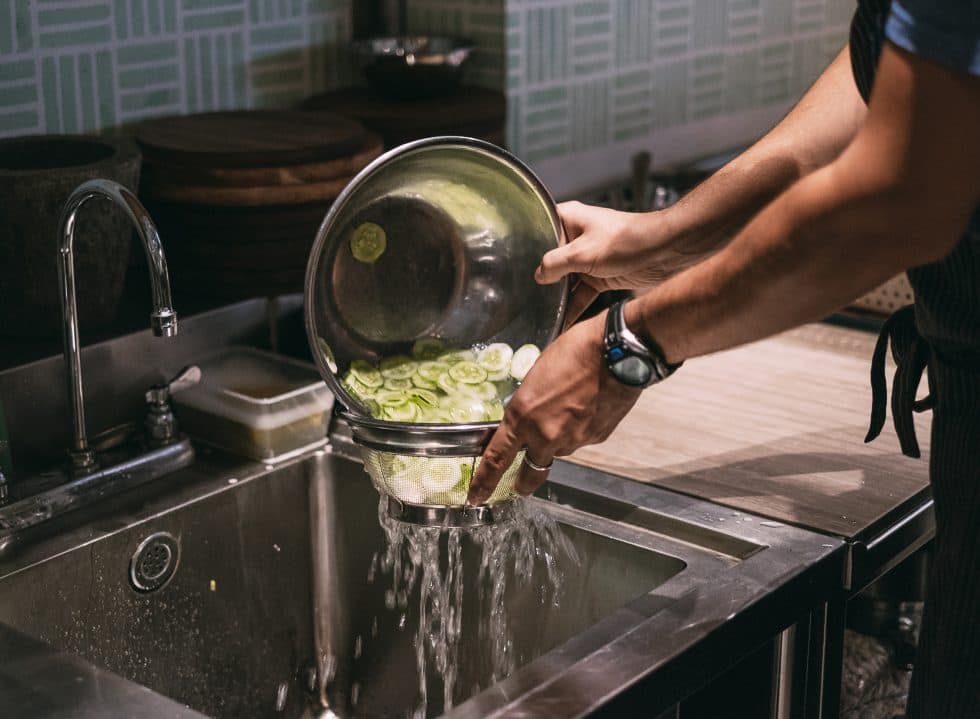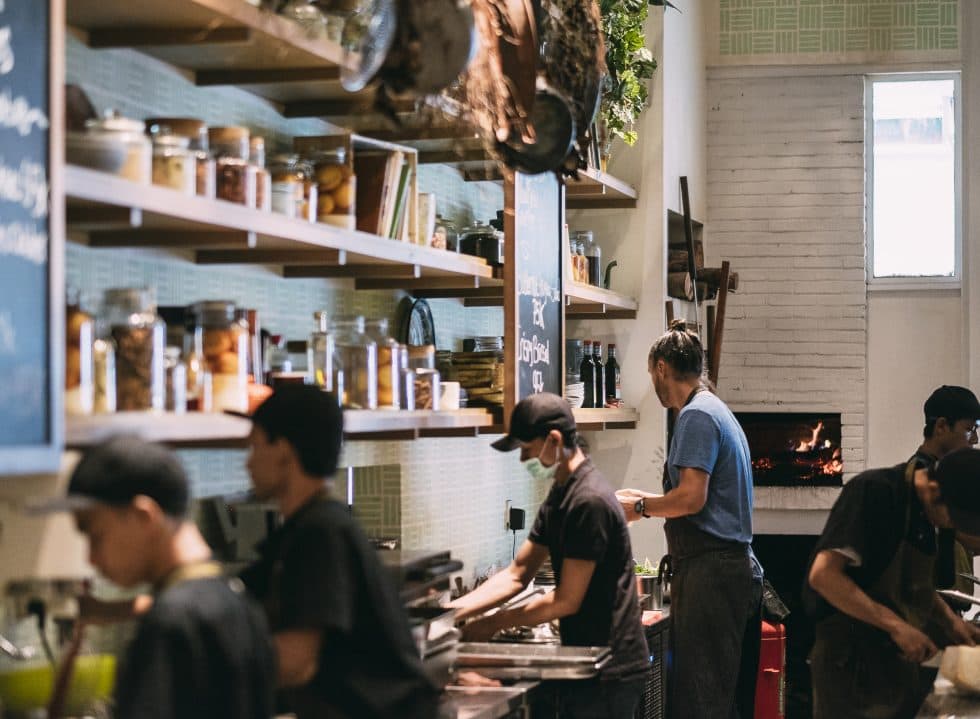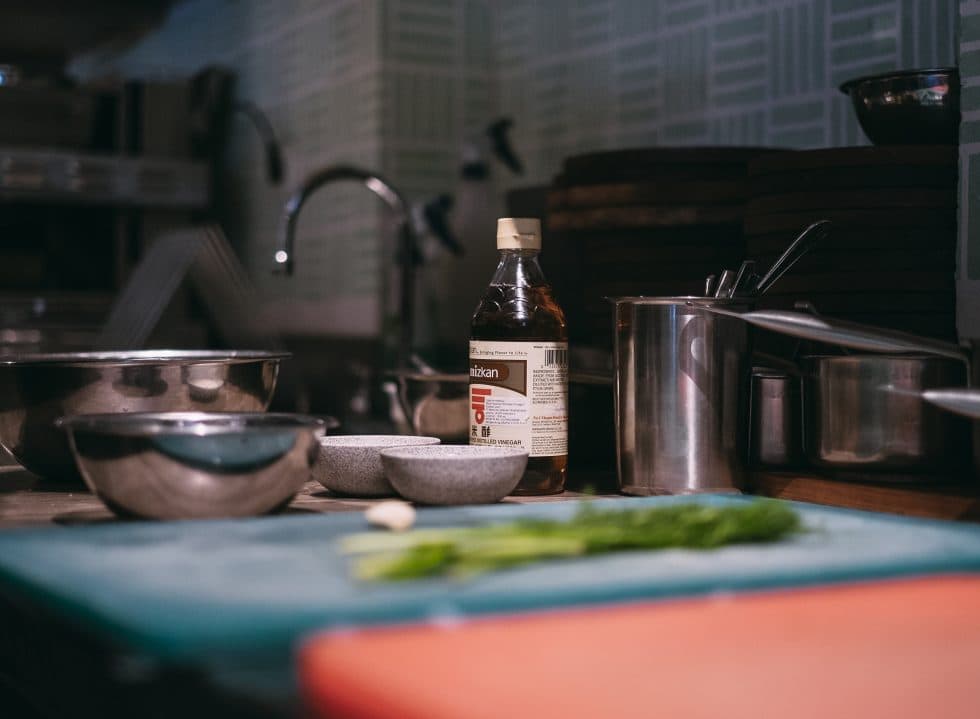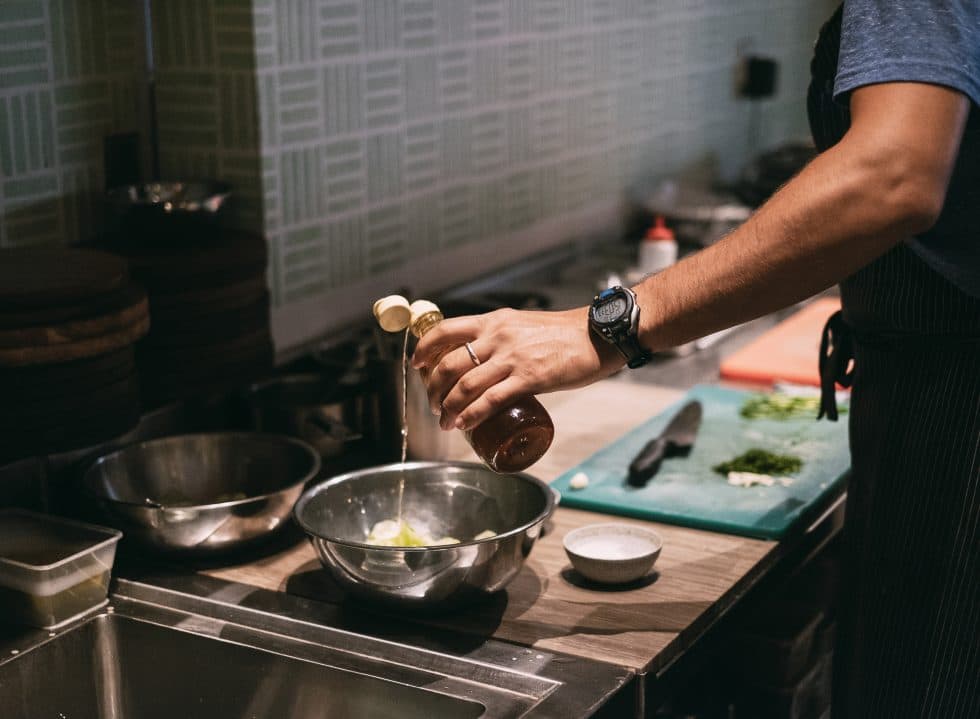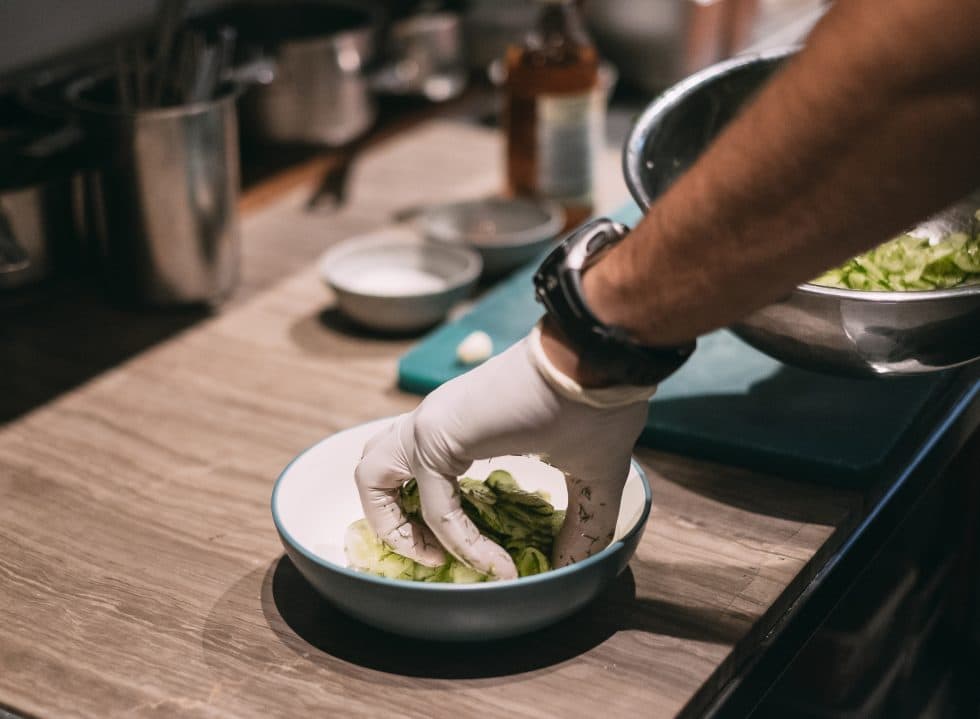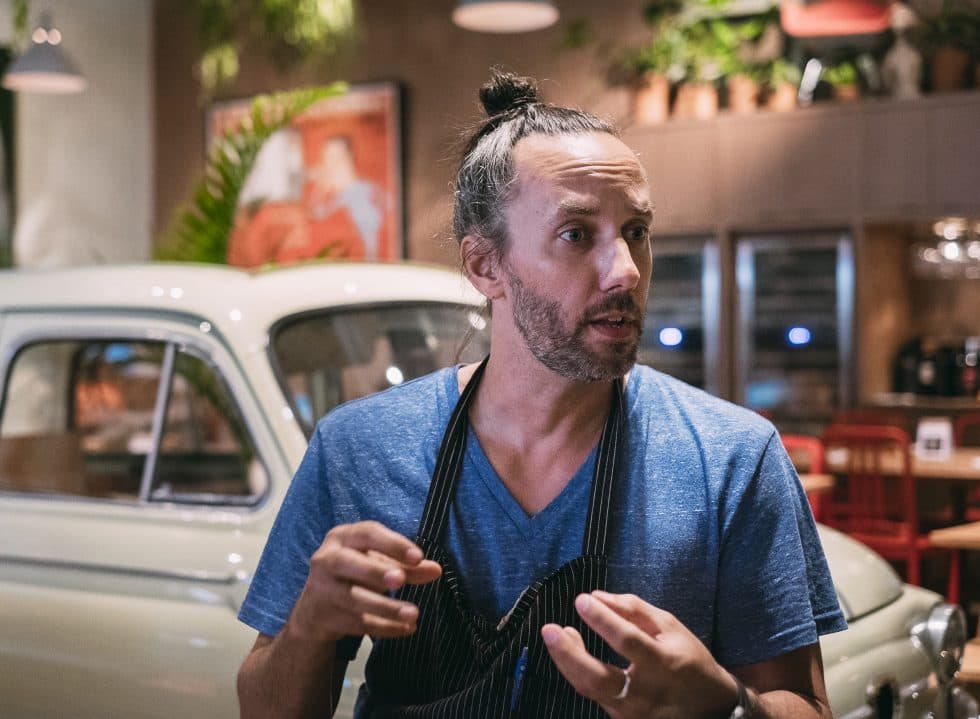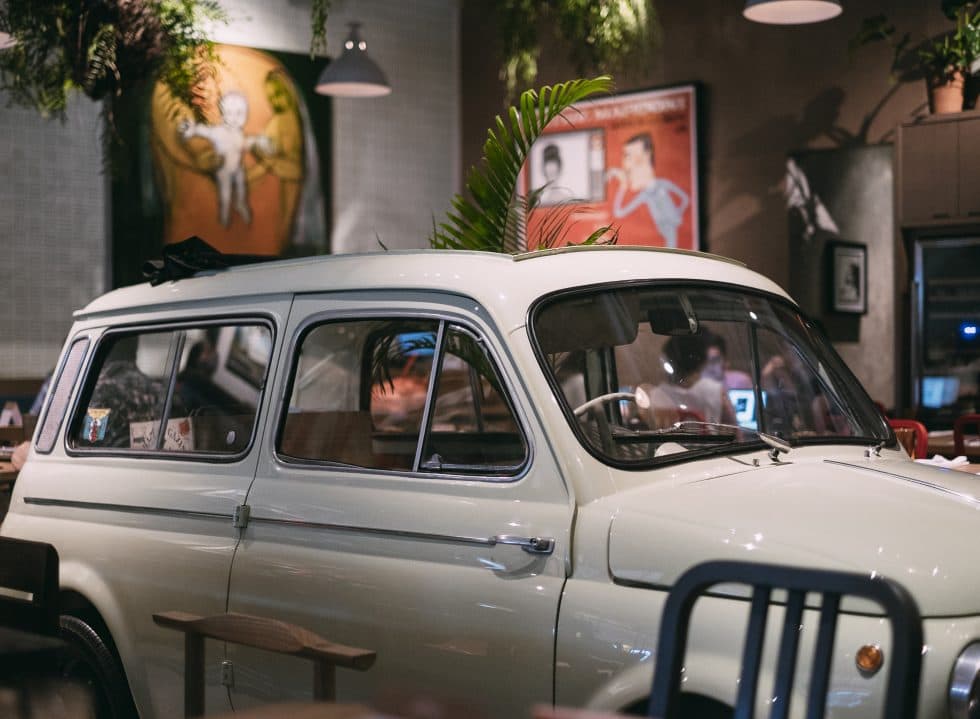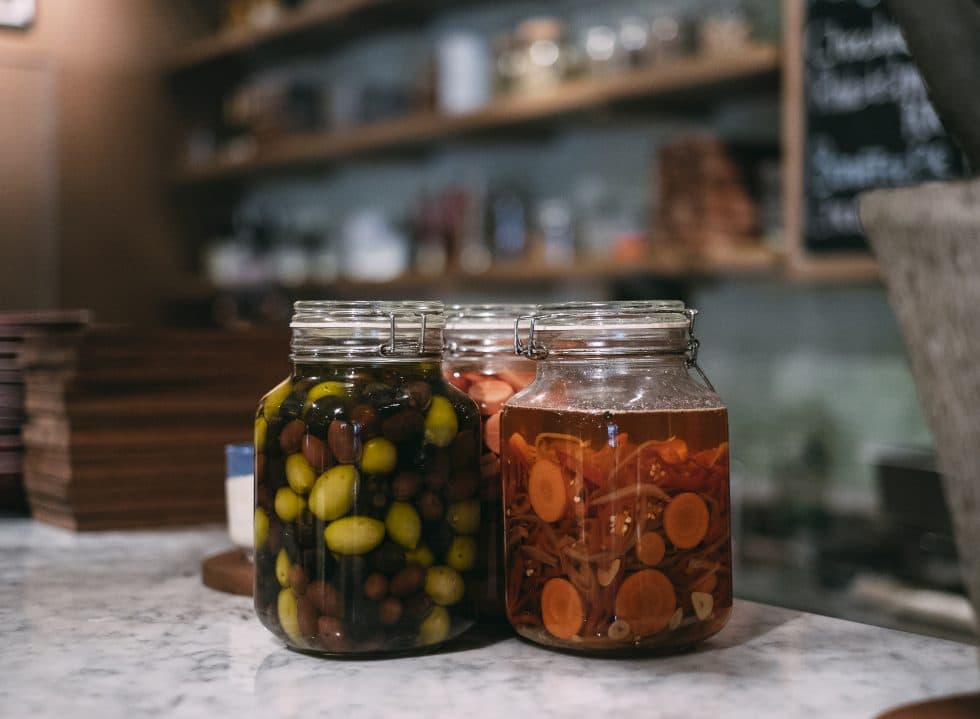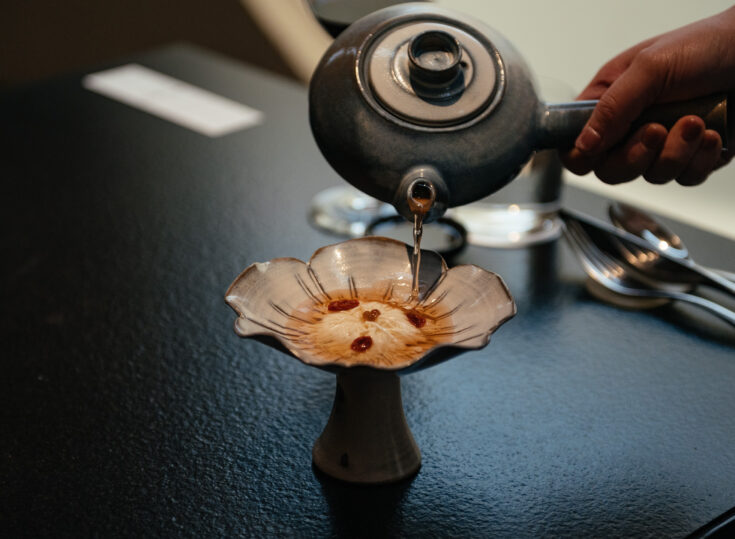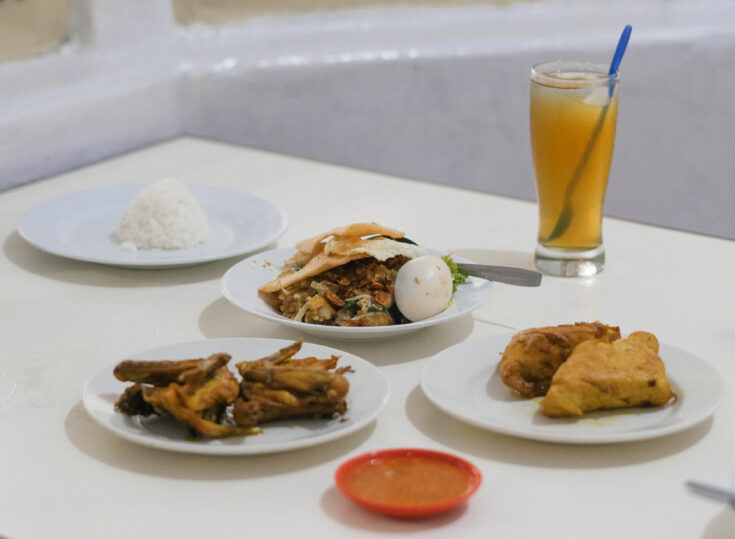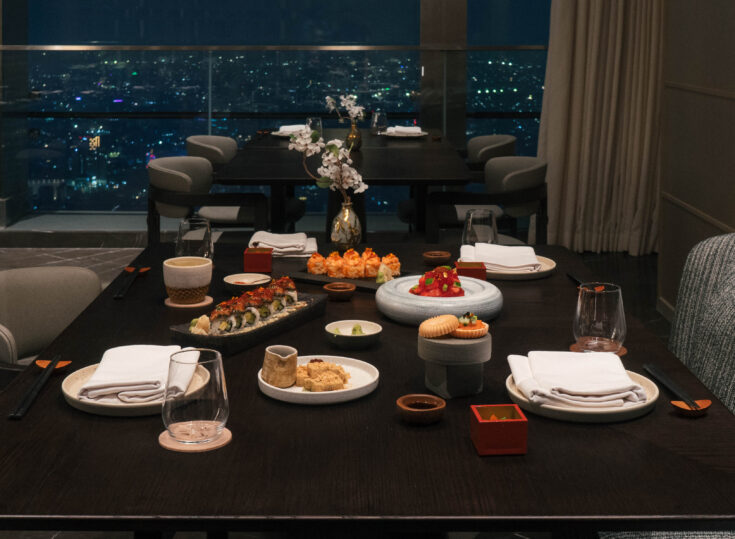As the latest establishment from Potato Head Family, Attarine has drawn crowds of all ages ever since its opening. The secret lies on its spellbinding dishes that take an inspiration from the Spice Route, serving modern cuisine made from the freshest, in-season local ingredients and spices.
The guy behind it all is Jacob Burrell, the executive chef of the establishment. Hailing from California, Burrell’s past experiences include noted restaurants, namely Big Sur Bakery and Restaurant as well as the three-Michelin-star Manresa Restaurant, both in California. However, despite his long tenure in the cooking world, he feels that there’s still plenty to discover.
“I’ve been at this [working as a chef] for over 20 years and the only thing I realise is that I know nothing,” says the chef. “I’m still just a baby in the food world, and excited about being here now, fortunate to be here, and everything is so different. It’s like a kid in the candy store.”
Putting on the executive chef hat in Attarine proves to be another exciting challenge for Burrell. Collaborating with local suppliers, the restaurant aims to put locally grown vegetables and grains under the spotlight, instead of just relegating their status as a “side dish”. “Focusing more on vegetables and grains is a nutritionally stronger and potentially more sustainable way to eat,” says Burrell.
In the future, he hopes to break the exclusivity of meat or fish or vegetarian cuisine, and instead combine the three. By shifting the way people cook and eat, it will in turn, support the ecosystem and reduce carbon footprint – it’s a cause that Attarine has been proudly advocating since the beginning.
Which is why, one must not skip the restaurant’s vegetable-based dishes. If you’ve been to the establishment, it’ll be hard to forget the wide variety of colourful pickles by the kitchen bar. Aside from complementing the main dish, they’re also tasty to be consumed as it is.
Closing our interview with Chef Burrell, we were lucky to be given the recipe for the pickles, as provided in detailed by the chef himself. “I find the best recipes, the real eye – or mind – openers, are more conceptual and abstract and get into the “why” a bit,” says the chef. With that being said, the following cucumber pickle recipe zeroes in more on the techniques and maxims, of which the chef says, “Can be applied over and over again, in a variety of ways.”
Quick Cucumber Pickle
The recipe is divided into two parts: preparing the vegetables and seasoning.
Preparing the vegetables
Directions:
- Wash the vegetables.
- Assess your ingredients: skin and seeds
(“From here, it’s a matter of mood, assessing the ingredient in front of you, and thinking about your desired outcome,” says Burrell).
Skin: If your veg is mature, the skin is probably thick and tough. Meanwhile, the store-bought ones are usually waxy. If so, then peel. When it’s a little waxy, peel the stripes off to break up texture
Seeds: Seeds can be unwelcomed for cucumbers, especially the mature ones. If so, half lengthwise and scoop out the seeds – leaving you with two cucumber “boats”.
- Slice the veg. “Thin to win” is the way to go if you’d like to use/consume the pickle right away. The thinner you slice, the faster they will deteriorate, so best to make what you’ll use right away. If you want to get a couple days out of one batch, slice a little thicker.
- Weigh them and add 1 per cent (by weight) of salt to the veg, then toss. Cover and let them sit at room temperature for an hour (thicker veg can handle a little more time under salt as they store more water)
- When the time is up, there should be a pool of vegetable (salt) water at the bottom of your vessel. Drain and rinse veggies a few times.
Seasoning
Directions:
- Taste a slice of your veg to assess the level of salinity. (“Know where you’re starting from to help get you where you want to go,” says the chef). The key is to keep the seasoning very simple.
- Add a pinch of salt .
- One or two pinch of sugar, depending upon your vinegar.
- Add a touch of chopped garlic.
- Season with a couple good splashes of vinegar. Each type of vinegar has different concentrations. Rice vinegar is always very mild, while wine vinegar is more assertive.
- Add chopped herb of some kind; dill, mint, or any lemony herb are usually nice.
- Add some spices or seeds to compliment your vinegar and herb choices.
- Toss your veg and serve.
Some Tips:
- While cucumber is high in water content, any other vegetable with the similar trait can easily sub for it; be it zucchini, radish, celery or cabbage.
- Pair apple vinegar with chopped dill and celery seed.
- If you opt for rice vinegar, pair with chopped seaweed and sesame.
- If you opt for white wine vinegar, combine with crumbled bay leaf and cracked black pepper.
- Depending on your preference, the pickles will take on more flavour as the days pass.


